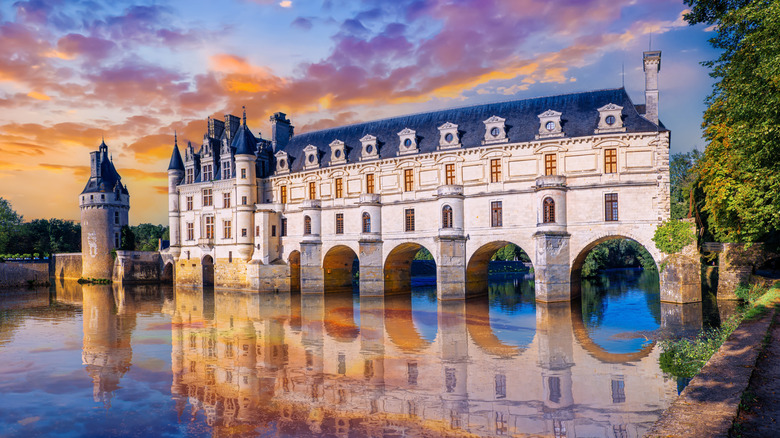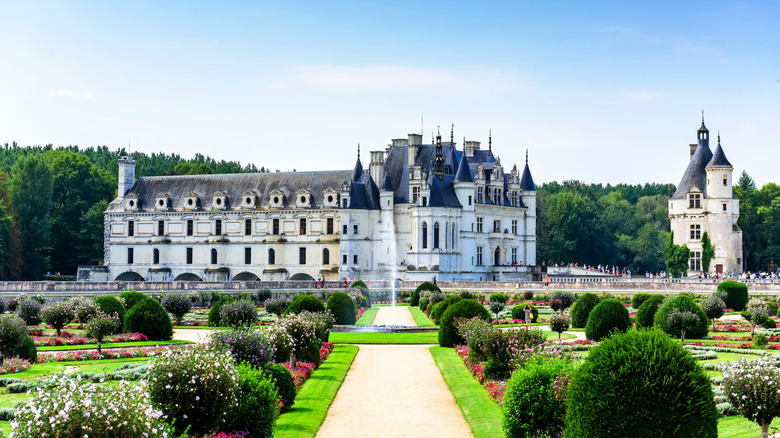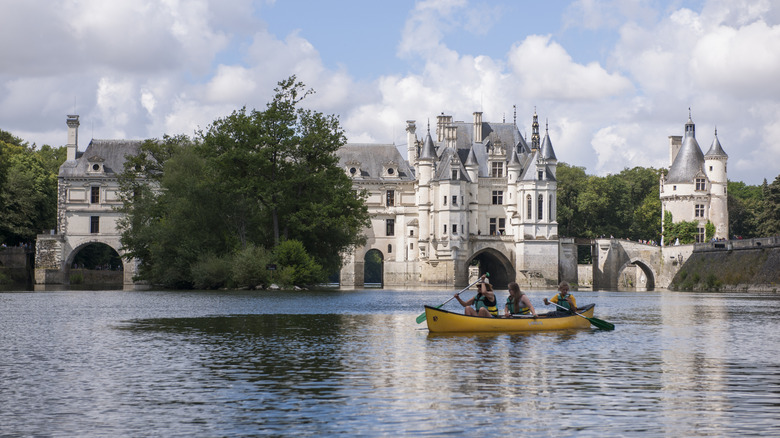As far as fairytale castles go, the Château de Chenonceau in France’s Loire Valley is perhaps the most exquisite. It has the requisite towers that appear plucked from a children’s storybook, elegant gardens punctuated by fountains and a maze, and it sits as a bridge, astride the River Cher, adding to its whimsy. The castle’s history is long and, intriguingly laced with the stories of many women of note, leading to it gaining the moniker: Château des dames (The Ladies’ Chateau), and its various interior rooms, formal gardens, and even its stables hold stories from women like Catherine de’ Medici, Regent of France, and Diane de Poitiers, the mistress of Henry II of France.
For visitors, the castle is like a time capsule of eras, with some parts of the building dating as far back as the 12th and 13th centuries and others to the 16th century. There are stunning interiors ornamented by art by Tintoretto, Rubens, and Mino de Fiesole, and for those with a love of French wine, the Cave des Dômes offers wine tastings in its remarkable 16th-century cellar, with wines from the surrounding AOC Touraine-Chenonceaux vineyards, part of the famed Loire Valley, one of the best yet underrated French wine regions.
In a region of France known for its incredible fairytale-like castles. This one, the exceptional Château de Chenonceau, is the castle that stands out as prettiest and as a must-see on any itinerary, whether sampling Loire Valley food and wine or adding it to an exploration of Rick Steves’ favorite region for biking.
Exploring the history and beauty of Château de Chenonceau: the Ladies’ Chateau
Exploring Château de Chenonceau is like a lesson in French history. On one side, there are the architectural elements like the medieval dungeon, the last remnant of the original chateau, the iconic bridge added in the 16th century, and the various gardens. But then there’s the history of women who have left their mark here. As Henry II’s royal mistress, Diane de Poitiers was the first woman to take ownership of the chateau, adding gardens to the right bank of the river and creating the bridge. But then Catherine de’ Medici, Henri II’s wife, took ownership of Château de Chenonceau upon the king’s death, and added several floors to the bridge, giving it the unique appearance we see today.
Of course, there are more tales. Some are haunting stories, such as the prolonged mourning of Louise of Lorraine after the assassination of her husband, King Henry III. Others contain important histories like the rescue of the chateau from the French Revolution by Louise Dupin, who cleverly argued its use as a bridge for crossing the River Cher. Most modern stories revolve around the numerous restorations and the castle’s use in the World Wars. Specifically, as a hospital ward in WWI and as a demarcation line in WWII, dividing occupied France on one side of the river, and the free zone on the other.
For a perfect visit, first explore the four floors of Château de Chenonceau’s enchanting interiors to learn more about the people who lived there. And afterwards, stroll through the romantic gardens before finishing with a row on the river, gliding beneath the castle via the iconic arched bridge.




